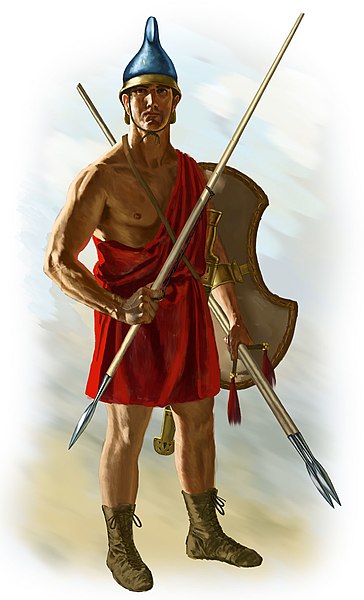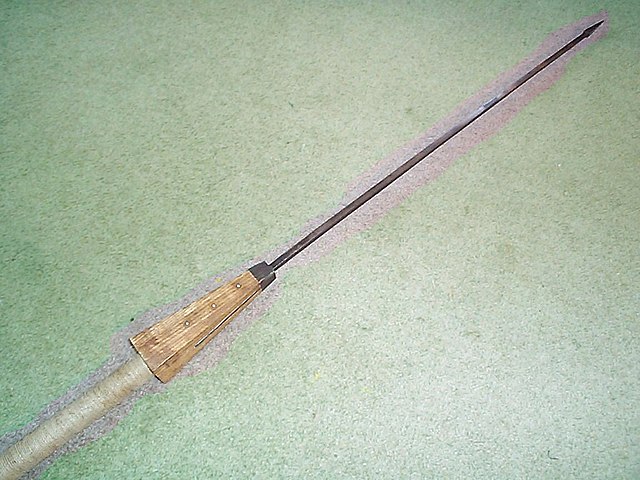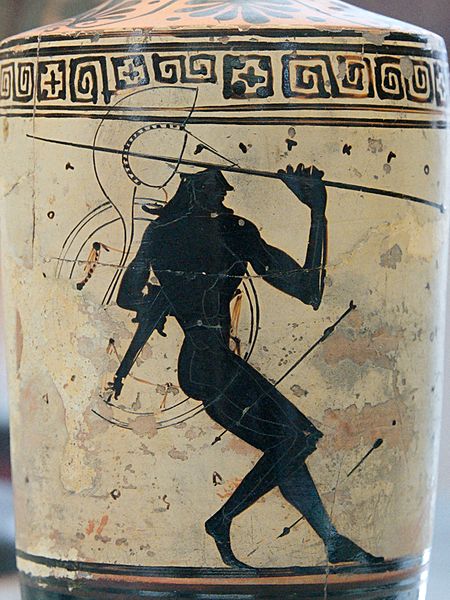A javelin is a light spear designed primarily to be thrown, historically as a ranged weapon. Today, the javelin is predominantly used for sporting purposes such as the Javelin throw. The javelin is nearly always thrown by hand, unlike the sling, bow, and crossbow, which launch projectiles with the aid of a hand-held mechanism. However, devices do exist to assist the javelin thrower in achieving greater distances, such as spear-throwers or the amentum.
Javelin thrower. Bronze, Laconian style, third quarter of the 6th century BC
Agrianian peltast. This peltast holds three javelins, one in his throwing hand and two in his pelte hand as additional ammunition
A depiction of a javelin thrower on an ancient Greek vase, ca. 450 BC. Attributed to the painter of the Brussels Oinochoes.
Reconstruction of a post-Marian pilum
A spear is a polearm consisting of a shaft, usually of wood, with a pointed head. The head may be simply the sharpened end of the shaft itself, as is the case with fire hardened spears, or it may be made of a more durable material fastened to the shaft, such as bone, flint, obsidian, copper, bronze, iron, or steel. The most common design for hunting and/or warfare, since ancient times has incorporated a metal spearhead shaped like a triangle, diamond, or leaf. The heads of fishing spears usually feature multiple sharp points, with or without barbs.
The Clacton Spear, a spear point from about 400,000 years ago, and the oldest known spear, Natural History Museum, London
Hunting spear and knife, from Mesa Verde National Park
Athenian warrior wielding a spear in battle
Re-enactor outfitted as a Late Roman legionary carrying a pilum








